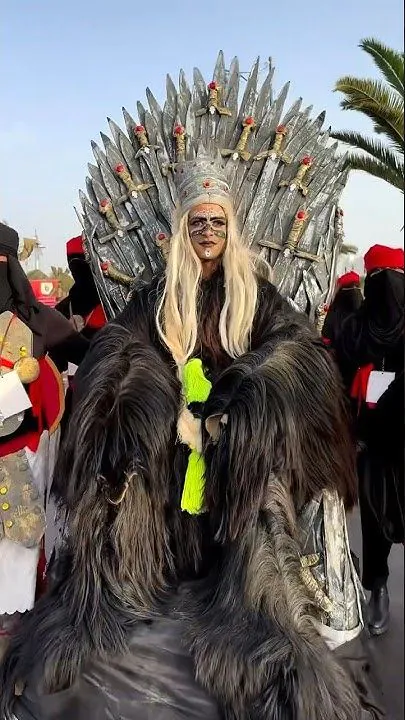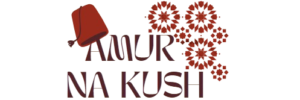
From the Heart of Souss to the World: What is Boujloud?
The Boujloud Festival, also known as Bilmawn or Bilmawn Boudimoun, is a vibrant and ancient Amazigh (Berber) tradition celebrated mainly in southern Morocco, particularly in cities like Agadir, Inezgane, Dcheira, Aït Melloul, and Tiznit.
Held immediately after Eid al-Adha, this colorful festival sees young men take to the streets dressed in sheep or goat skins, dancing and marching to the beat of traditional drums and music, creating a unique mix of celebration, cultural pride, and deep-rooted ritual.
Historical Roots: Where Did Boujloud Come From?
Boujloud is believed to have pre-Islamic roots in Amazigh North Africa. It is linked to post-sacrifice rituals where people used animal skins to symbolize blessings, protection, and a form of spiritual renewal.
The term “Bilmawn” in the Amazigh language means “the one who wears,” referring to the costumed participants. Some scholars trace its symbolism to ancient pagan festivals celebrating nature, fertility, and harvest, making it an ancestral celebration of life cycles.
What Happens During the Festival?
Costumes & Rituals: Participants wear freshly tanned animal skins (usually from Eid sacrifices). They also wear handmade masks, apply paint or ash on their faces, and hold sticks made from animal legs. These figures parade through neighborhoods, playing both comedic and fearsome roles that blend fun with deep meaning.
Music & Dancing: Traditional music like Ahwach, Reggada, or Ahouach accompanies the festivities. Groups of drummers and dancers move together, creating a festive, tribal atmosphere.
Community Involvement: Entire communities, including children and elders, gather to watch or participate in the processions. Touching one of the “Boujloud” figures with their stick is believed to bring good luck and blessings for the year ahead.
From Tradition to Modern Carnival
In recent years, Agadir has elevated this tradition into a more organized event: the “International Bilmawn Isaffen Carnival,” launched in 2023.
Highlights include:
- Parades and cultural performances by local and international groups (from Benin, Côte d’Ivoire, Mali, Togo, etc.).
- Artistic events in Agadir’s city center, attracting tourists and media.
- Support from local municipalities and the Ministry of Culture to promote Amazigh heritage.
The aim is to preserve and modernize this unique cultural identity, while also using it to boost cultural tourism.
Cultural and Spiritual Meaning
Wearing the skins symbolizes the transformation from human to beast, a release from the normal self , it’s symbolic of rebirth. It also reflects a cleansing ritual after the spiritual act of sacrifice. The festival is a collective celebration that strengthens community bonds and connects people to their ancestors.
A Platform for Youth Expression
For many young participants, Boujloud has become more than a tradition , it’s a way to express creativity, identity, and even social commentary. Some groups use the festival to perform street theater or share messages about community issues, all while respecting its symbolic roots.
Handicrafts and Local Economy
The festival also contributes to the local economy. Artisans who create traditional masks, leather costumes, and musical instruments find increased demand during Boujloud. Many locals also sell food, crafts, and handmade souvenirs to festivalgoers, turning this cultural event into a small economic engine.
Key Facts About Boujloud Festival
| Element | Description |
|---|---|
| Name Meaning | “Bilmawn” = “the one who wears” (Amazigh) |
| Main Locations | Agadir, Inezgane, Dcheira, Aït Melloul |
| Timing | After Eid al-Adha (4–5 days) |
| Origin | Ancient Amazigh tradition |
| Symbolism | Purification, rebirth, blessings |
| Modern Development | Transformed into an international carnival since 2023 |
Watch Boujloud in Action
Check out this video to see the energy and creativity of the festival:
▶️ Bilmawn International Carnival – Agadir 2024 (YouTube)
Unlock Exclusive Spring Travel Deals to Morocco
If you’re planning to visit Morocco during the spring season, this is the perfect time to experience both adventure and authenticity. Travel agencies and airlines often release exclusive spring travel deals, making it easier and more affordable for international visitors to explore Morocco’s diverse cultural landscape.
Agadir, being a host city for the Boujloud Festival, becomes even more vibrant in the spring. With mild weather, golden beaches, and the buzz of post-Eid celebrations, it offers an unforgettable mix of coastal charm and cultural richness.
Check online platforms or consult with Moroccan tourism agencies for special packages that include guided tours, accommodations, and local experiences during festival periods. Whether you’re a solo traveler, a couple, or with family, spring is a magical window to discover Morocco beyond the usual tourist spots.
Conclusion
The Boujloud Festival is more than just a costume party , it’s a living cultural ritual that continues to thrive in Morocco’s south. It reflects the resilience of Amazigh identity, the power of community, and the deep ties between people and the natural cycles of life.
Whether you see it as performance, prayer, or heritage, Boujloud remains a bridge between the ancient and the modern, between the sacred and the festive, and between generations who continue to breathe life into this extraordinary celebration.
Have you ever experienced Boujloud in your city or village? Share your memories or thoughts in the comments below ,we’d love to hear your story!
